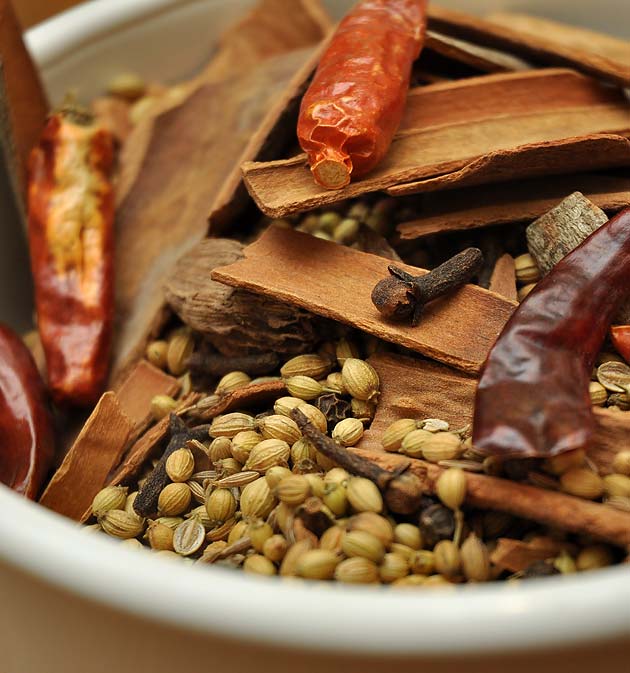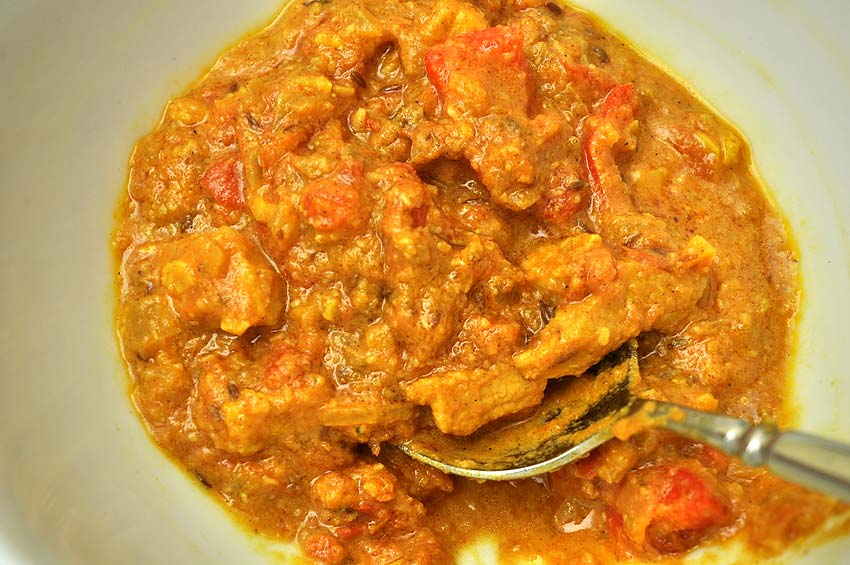Tags
Related Posts
Share This
Curry. The Whole Story.

Nowadays, curry is kind of like pizza. A food with humble beginnings that came from a very specific part of the planet but is now enjoyed in a myriad of ways all over the globe. Best known as an East Indian creation, many countries through Asia, The Middle East and Africa have their own take on what curry is.
It’s enjoyed everywhere and new ideas flow from the concept every day. A mix of spices that turn our everyday foods into something exotic.
Like most North Americans, I was introduced to curry the typical North American way, by way of some regular, familiar ingredients that happened to be spiced with curry powder or curry paste. Back in 1990, a co-worker of mine came to work with a small tupperware vial, held it up to my face and said “you gotta try this.”. Inside was a few tablespoons of hot curry paste, the Patak’s brand which I believe may have been pretty new back then. It was very good and I started buying jars of the various Patak’s products, putting together all manner of beef, lamb, pork and chicken curries.
Years later though, as I got more into cooking and researched the origins of many different foods around the world, I discovered that there was a better way, the original way, to make a simple curry. Whole spices was where it was at. I was going to have to learn about each individual spice that makes up a curry and make the mix on the fly myself.
That was the first lesson. The second was that not all curries are made equal. Different spices should be used in different quantities for different things. A curry for lamb uses a different mix of spices from a curry for fish, for example. So all of a sudden, that jar of “curry powder” I had at home became obselete.
That’s not to say however, that there’s a right way or wrong way with whole spices. What works in a dish is up to you. It is definitely worth it though to start experimenting with whole spices in your quest for a better curry. Start with small amounts of a few spices and see what works. The most common you’ll find in a simple curry are cumin seeds, coriander seeds, cloves, cinnamon, turmeric, chilies and cardamom. Add salt and pepper and you’re off to a good start. Experiment further with garlic, ginger, fenugreek, black cardamom, nutmeg, mace, mustard seed and many more, and the idea of Atlantic Canada grocery store curry powder packages begins to look pretty silly (they’re mostly turmeric).
Having all those spices listed separately makes this dish, and most curries, look complicated and time consuming but it’s not at all. We’re just talking about a quick assembly of vegetables, meat and flavour here. Get your spices ready beside your stove first then just get on with it.
I’ve got all my spices in mason jars ready to go if a curry need suddenly breaks out. I’ve also got a coffee grinder that’s used exclusively for spices. That makes it easy, fast, flexible and convenient to make awesome curries every time you have a craving. Wherever you can, buy spices in their whole, dried form for the best flavour. Turmeric is almost never available in whole form but most other spices are. The Bulk Barn is your friend here; they’ve got cardamom pods, cumin seeds, coriander seeds, whole cloves and much more.
Here’s a nice simple pork curry with a good quantity of vegetable goodness and loads of vibrant flavour thanks to whole seeds and freshly ground spices. Just eyeball the measurements as always, and have fun with it. Go whole!
Basic Garam Masala
2 teaspoons whole cloves
1 inch piece cinnamon
2 teaspoons cardamom seeds
2 teaspoons whole black peppercorns
Place all spices in a coffee grinder reserved just for spices and grind to a fine powder. Make in small batches like this so that it is as fresh as possible for every dish you make.
Pork, Vegetable and Coconut Curry
2 tablespoons vegetable oil
1 tsp cumin seeds
5 whole cloves
6 cardamom pods
1 two-inch piece of cinnamon
5 dried red chilies, seeded and chopped (or more or less to taste)
1 teaspoon turmeric
1 medium onion, chopped
2 cloves garlic, minced
2 teaspoons fresh ginger, minced
5 plum tomatoes, chopped
2 teaspoons garam masala (equal parts black pepper, coriander seed, cardamom seeds and cinnamon ground to powder in a coffee grinder resereved solely for spices)
salt and pepper to taste
1/2 lb or so lean pork roast, chopped into cubes
1 small red bell pepper, cut into cubes
60g or so of creamed coconut concentrate
1/2 cup hot water
Heat the oil in a high-sided fry pan over medium heat for a couple of minutes. Drop in the cumin seed, cloves, cardamom and cinnamon. Cooking the spices in oil rather than a water-based cooking medium really brings the flavour alive so this is one of several important steps. Let it sizzle for a minute or so, then add the chopped chilies, turmeric and onion. Cook and stir for five or six minutes until the onion is very soft and beginning to just slightly brown. Add the garlic and ginger and stir well for a couple more minutes. Add the chopped tomatoes and stir for a few minutes to blend together. Let this cook gently now for 10 minutes or more until it’s reduced to a bubbling, aromatic, smooth gravy. Allowing this mixture to fully cook and reduce is another important step. Add a teaspoon of garam masala, then stir in the pork cubes and bell peppers. Toss well in the sauce and simmer for five to seven minutes. Mix the coconut concentrate with the hot water until dissolved and add it to the curry. Simmer the curry gently for another 10 minutes. Check seasoning for salt and pepper and add more garam masala at the last minute if desired. Serve garnished with fresh chopped coriander and plenty of fresh cooked rice. Poppadums are nice too! Note: If desired, you can pick out the whole cloves, cardamom and whole cinnamon before you serve. They’ll be easy to spot.

The finished curry. Bursting with flavour from whole seed goodness.






Great to hear from you Kate! That’s so cool you got introduced to it way back then. Coming from Thompson, Manitoba – Sudbrury’s sister city in the Nickel biz – I knew a lot of East Indian families up there but my parents weren’t nearly as adventurous as yours. I had to wait until I was on my own to discover it for myself. Now hooked!
When I was a kid in Halifax, my parents were friends with some Indian families. We were often invited to pujas (religious ceremonies), holiday parties and such and food was always a major part of it. I’ve had the best of north and south Indian prepared by home cooks. My mother tells the story of trying to imitate the Indian recipes. She went to Sobey’s (this would have been in the 70′s) looking for a lime. She asked the produce manager who asked her to describe it. She said like a lemon only green. He didn’t have a clue what she wanted. Then we discovered Iqbal’s grocery on Robie Street that carried all the Indian staples. Not sure if it’s still there.
Anyway, now stores routinely carry fresh coriander and ginger and most stuff you need. Just recently, in Sudbury, I found kokum (a dried prune-like fruit that is salty-tangy), kalonji (nigella seed), black chickpeas, ajwain (a thyme-like spice) and even fresh methi (fenugreek leaves) but no fresh curry leaves. Planning a black chick pea curry for the weekend. They’re supposed to be more nutritious than the pale ones (also called Kabuli chick peas) Sweet creamy ataulfo mangos are in season (from mexico). Still trying to find some papadums so I can nuke them a la Hawk. Maybe this pork curry too. Wish I could have you all pop over to Sudbury for a spicy feast. Thanks for indulging the blonde chick’s passion for Indian.